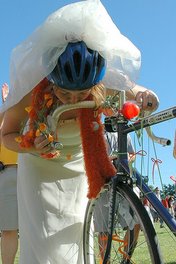Nicaragua: Managua, Matagalpa, El Cua
29 Junio 2007: Managua, Matagalpa, El Cua
This morning, Anna and i woke in the Quaker House. we got on board the express bus to Matagalpa, taking 2 hours or so. on the way, we looked over IUCN details that would definitely come up in conversation ith ATDER-BL. upon arrival in Matagalpa, we met with Aleyda at ATDER´s home office. there are 3 people that work there. the deeds and receipts from IUCN land puchases were ready for us, so we took no time in perusing them. Anna and Aleyda talked about the amendment to the title that needs to be filed with the land registration office, which ATDER can amend with IUCN´s language by the July deadline, and possibly before we leave Nicaragua. $15,000 is all that´s left from the IUCN grant, and the rest has gone to purchase land! Aleyda also said it shouldn´t be aproblem to buy the rest of the land by the and of July.
at 1:30, Aleyda, Anna and i got on the bus to El Cua/Bocay. it took 4 1/2 hours. the road started as concrete but quickly became rock and dirt after just a little while. the mountains are positively luscious! banana and cocnut trees abound! there are some terraced crops which i later discovered to be coffee.
as soon as we got to El Cua, Aleyda took us to TechniSol, a solar company that sells PV equipment systems and accessories. apparently there is a market for this in the north. a hotellay behind the store with 4 rooms, three of which our group occupied for the night.
Aleyda took us across the alley to ATDER´s workshop and El Cua office, where we met Doravel (Aleyda´s sister, and her coworker whose name shamefully escapes me. they discussed briefly the 20 year anniversary remembrance of Ben´s life, whose pictures were interspersed along the wall with accounts from the fiesta.
we swung across the hall to meet Felix and Arel. They are working on the hydro plant and just got the bugs out of a computer that describes wattage produced, use by villages, and amount sold back to the grid. all in real time. incredible. a few stories:
1. there was a piece of equipment recently that had a little fragment of metal clinging to it. the metal prompted the voltage to shoot up due to the friction, and they had to take part of the systemcompletely apart to find the offending particle.
2. they were having trouble with the turbine and had t run some maintenance procedures. they begged everyone not to turnon their televisions for a few hours but they are ¨stubborn¨, and the wattage usage shot up during everyone´s favorite soap opera despite Felix´s protestations.
after speaking with Felix and Arel, we went for dinner. rice, beans and onions with fried plantains. yumm! we hadn´t eaten most of the day, and cebollo never tasted so good. Aleyda told us about her family - a brother in Washington DC who cannot come back from the States, Doravel, and other family members that live in Matagalpa. we had met her husband very briefly before leaving Matagalpa. when asked the difference between electricity and none, she said that people stayed up a little later now watching TV and talking and get upa little later. there are computers inthe schools, in some shops, and in private homes as well. there is internet. women´s working time is about the same as before. however, before the use of firewood for cooking and planchas (irons) were rather dangerous and created smoky working environments. a s,all lull in the conversation, and we watched TV for a moment in the restaurant. ina barrio in Managua, Union Fenosa had taken one of the employees hostage during a utilities-use struggle. the utility had turned off electricity which also turned off the water to the barrio, and the people became angry.
Aleyda mentioned one time recently when the electricity was off for rationing (racionamiento), and everything was quite. Felix said when asked the difference between pre- and post-electricity that there was more dancing than before and that religious services were more festive, that everything seemed more vibrant with electricity.
Aleyda said they were already planning a 1 mW plant in a neighboring area in St. Therese and feeding it back to the grid. in the freest reserve, people use for forest and not for crops at all (though Anna and i were not entirely sure on this point. Anna would be better able to say). we walked back to the hotel. there were streetlights (alumbrado publico), souds of music and people talking on the streets. a group of kids were playing soccer in a concrete square under 4 large lights. it was so beautiful to hear music and crickets together, as well as seeing streetlights and stars. small frogs hopped across the concrete in front of our rooms.
other random remembrances:
. Doris´daughter´s name is Ashley
. Four people told us not to get robbed within the first 12 hours of our time here
. Sarah at the Quaker House is in Nicaragua for 4 months studying Nicaraguan Sign Language. before, people tended to hide their deaf children away from the rest of society because they felt heir children´s disability was proof of their iniquities. a school began to create a means of communicating about 30 years ago in Nicaragua, and children began talking with their ¨home sign¨, developing a new language through the social evolution. the language is now in its third generation, and the school teaches parents, who no longer hide their children, the language. NSL has more structure now, even boasting classifiers like Chinese (jia, zhang, ting, etc.).
. the driver´s horn from Matagalpa to Bocay was an electric wire dangling from the windowsill that had to be tugged.


No comments:
Post a Comment